Yield Farming: An Explanation
In this yield farming introductory guide, we’ll be looking at how yield farming works, and the ways in which DeFi protocols compensate users for providing value, by performing different types of economic activity. These efforts can include loaning funds to traders, providing token holders with liquidity supporting network operations by validating transactions, or promoting the protocol thorough marketing activities.
We will also be looking at the level of risk involved and how it can be mitigated, as well as the various strategies that can be employed to ensure the optimum return on investment.
What is Yield Farming?
Yield farming is a means of earning interest on cryptocurrency by implementing a choice of passive investment strategies. Participants can earn additional rewards, by taking on risk for a position and provide specific benefits to the protocol.
The yield farmer generally benefits from a pre-determined schedule of interest payouts, unlike with many other types of investment, where investors cross their fingers and hope for price appreciation over time. With a regular buy-and-hold position, you can simply purchase a stock, though the profits will not be well-defined. However, if the investor were to boost returns by loaning their shares to a short seller for a fixed compensation this would be yield farming.
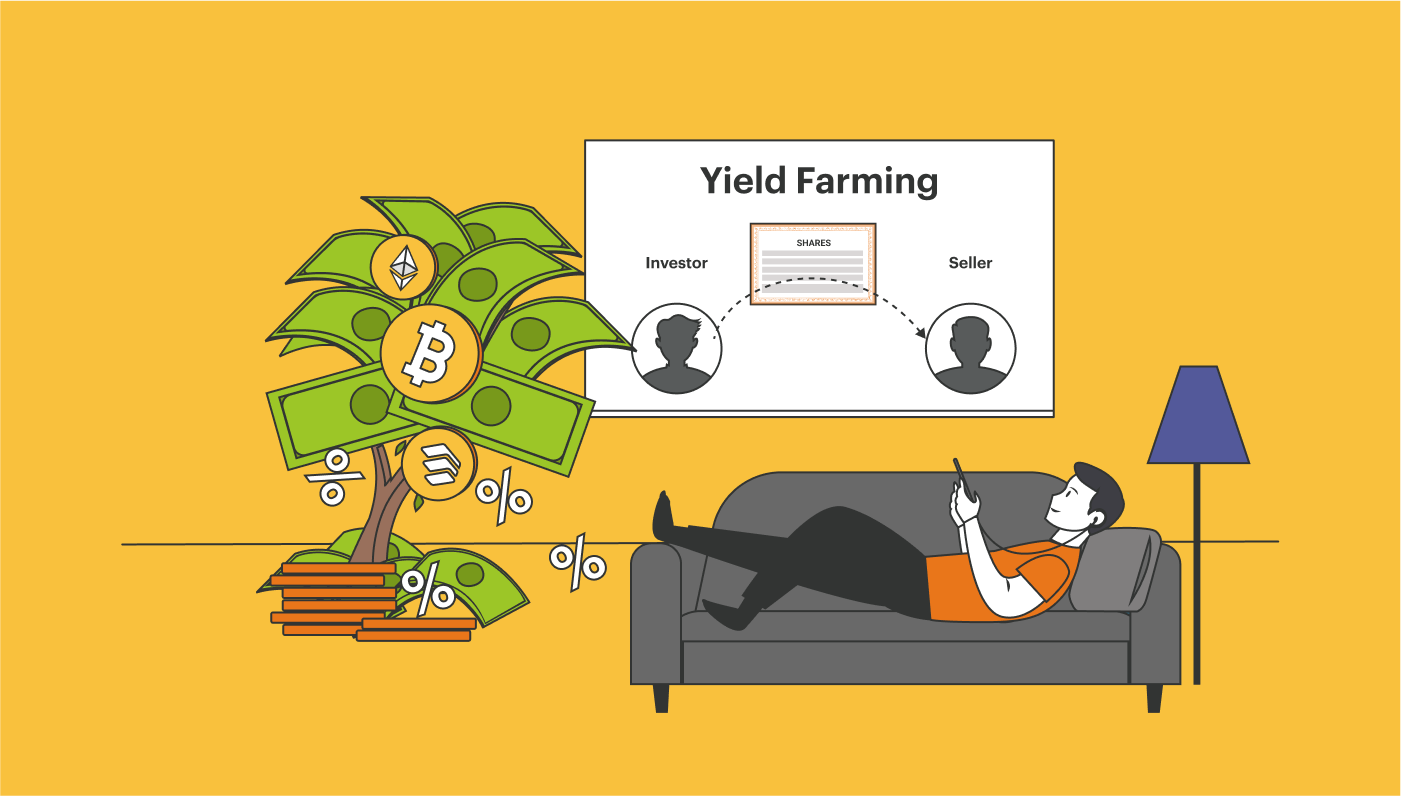
Let’s now look in detail at the five main ways in which yield farmers can generate sizable profits.
Yield Farming Activity 1: Lending
Exploding onto the scene in mid-2020 decentralized finance (DeFi) protocols allowed individual traders to participate in a range of lending activities that had previously only been available to major centralized institutions.
The trader can earn a profit by lending cryptocurrency positions. They simply place their capital in funding pools to which borrowers provide collateral so as to be able to borrow the funds. The protocols that offer this type of lending, will accept deposits from lenders in a base asset that exists outside the token economy of the protocol. In return for their loan, the lender will receive a native token, which they can utilize later on, to redeem their crypto position and the interest they accrued on the funds they loaned to the protocol.
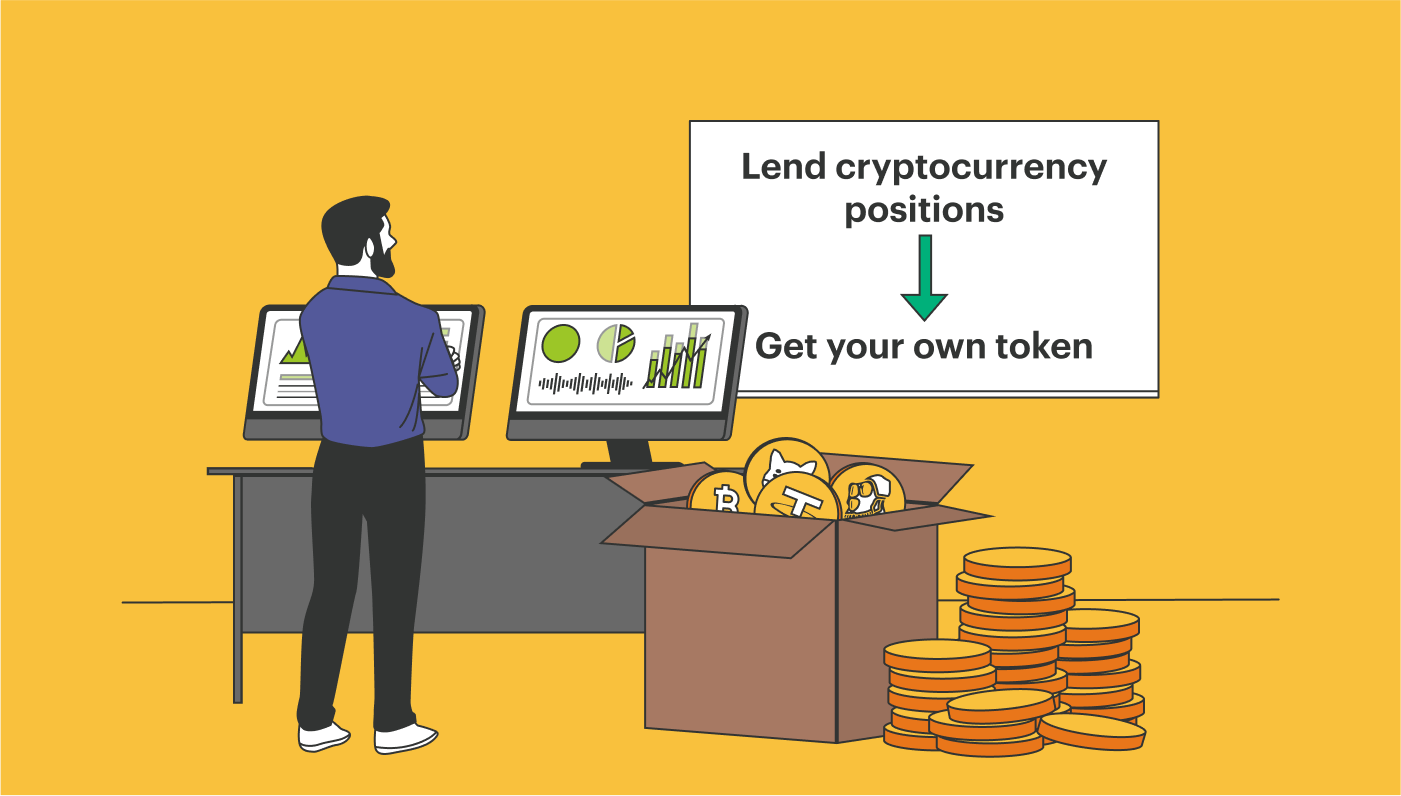
Basically, a trader with constraints on their capital can borrow from a pool funded by a yield farmer and pay interest, some of which goes to the protocol, while the rest goes to compensate the lender.
It is worth taking a moment to discuss over-collateralized lending, which is where lenders are exposed to the risk of the collateral losing value faster than it can be liquidated. Also, unless the loan is fully collateralized, there is always the danger of the borrower defaulting. These risks can be mitigated by using a protocol that vets the borrowers, through the examination of real-world off-chain data.
Yield Farming Activity 2: Liquidity Provision
Yield farmers can also earn a profit from providing liquidity, another way for individuals to generate revenue that was previously only available to professional market makers and centralized exchanges.
Yield farmers deposit crypto positions into Automated Market Makers (AMM’s). These are pools, which serve as liquidity hubs allowing trades between pairs of assets. The trader who wishes to borrow funds will pay spreads and other fees to swap tokens against the pools. Meanwhile, the liquidity provider earns these spreads and fees as a direct reward for facilitating the liquidity in both directions and taking on the risk of losses if the exchange rate changes.
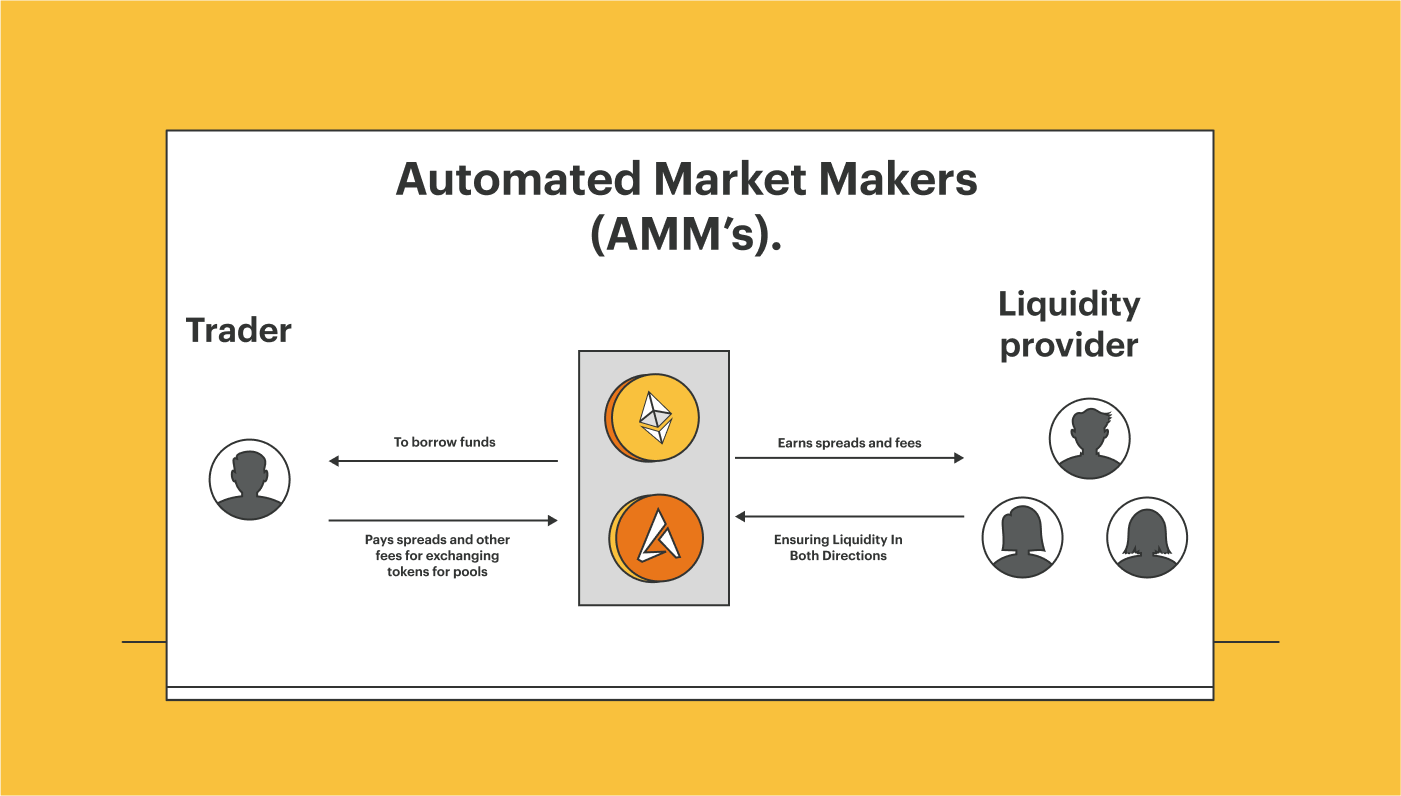
Another reward earned by liquidity providers is native tokens from the AMM. As well as their market value, the tokens offer reward schemes and protocol voting rights. The more tokens are owned the higher the fees from liquidity provision.
Yield Farming Activity 3: Validating Network Transactions
Yield farmers can also earn rewards for network operations. Validators, also known as node operators, process transactions and receive the native token as reward. There are two types of networks. Proof-of-work (PoW) uses competitive validation to verify transactions and add new blocks to the blockchain, while proof-of-stake (PoS) requires validators to post collateral, which can be seized if they under-perform, with the yield farmer bearing the risk.
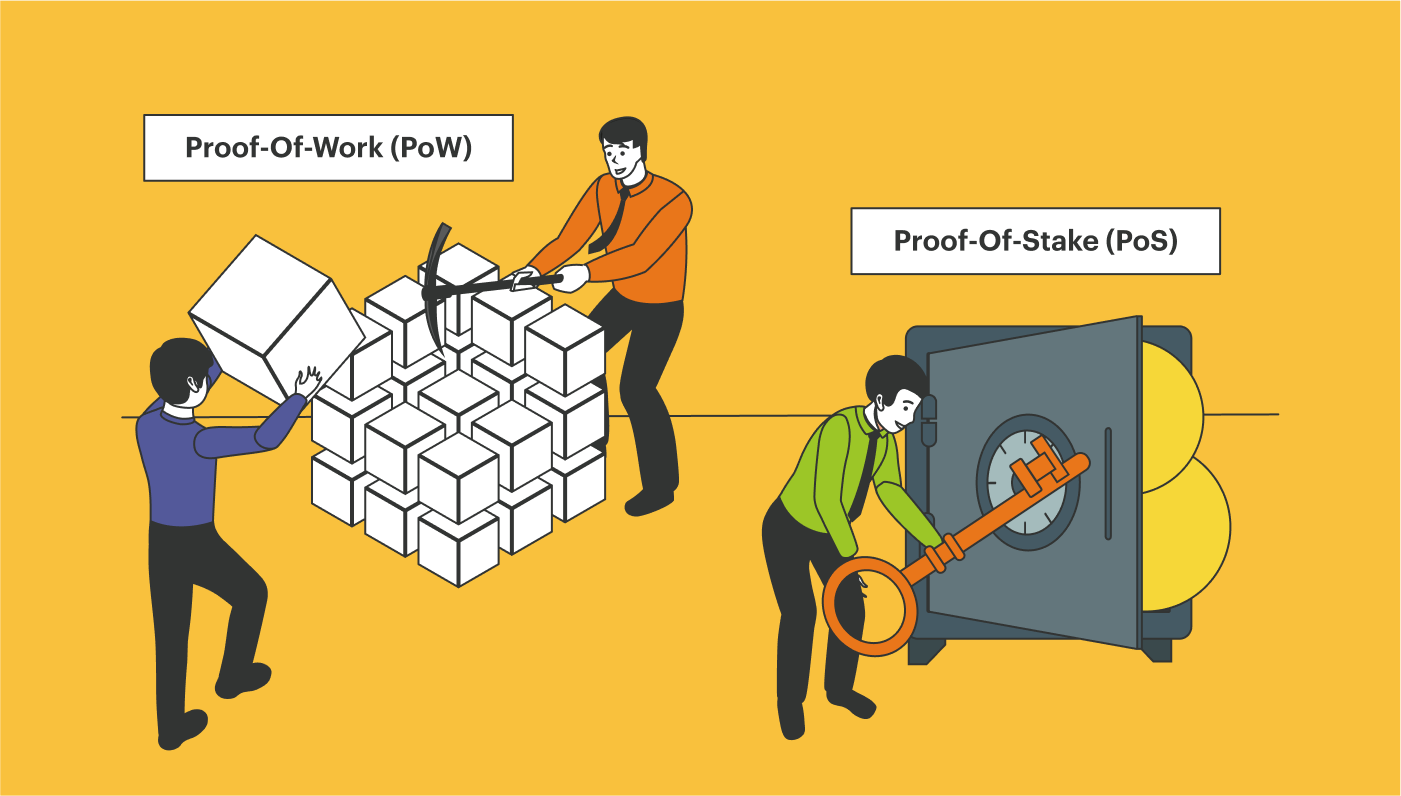
A yield farmer can allocate tokens to high-performing validators in return for a share in the profits. The network will then run more efficiently and securely to the benefit of all participants. The participants pay fees to validators to use the network and the validators pay a portion of that reward back to yield farmers.
Yield Farming Activity 4: Reward-driven Marketing
Another way yield farmers can generate revenue is through marketing strategies that encourage participation with the offer of huge staking yields.
The most popular protocols have the greatest Total Value Locked (TVL). This means they have the largest number of assets allocated helping the protocol gain visibility, awareness and public trust as well as boost its valuation, with increased usage.
To increase TVL, many protocols will encourage yield farmers to lock tokens, with the incentive of higher returns in the native token for longer locks on the funds. Lockups restrict supply with lowers selling pressure, encouraging yield farmers to keep their funds in the protocol. The risk of generating revenue from token distribution is that if funds are locked and the market shifts the owner of locked funds can’t respond to changing market conditions.
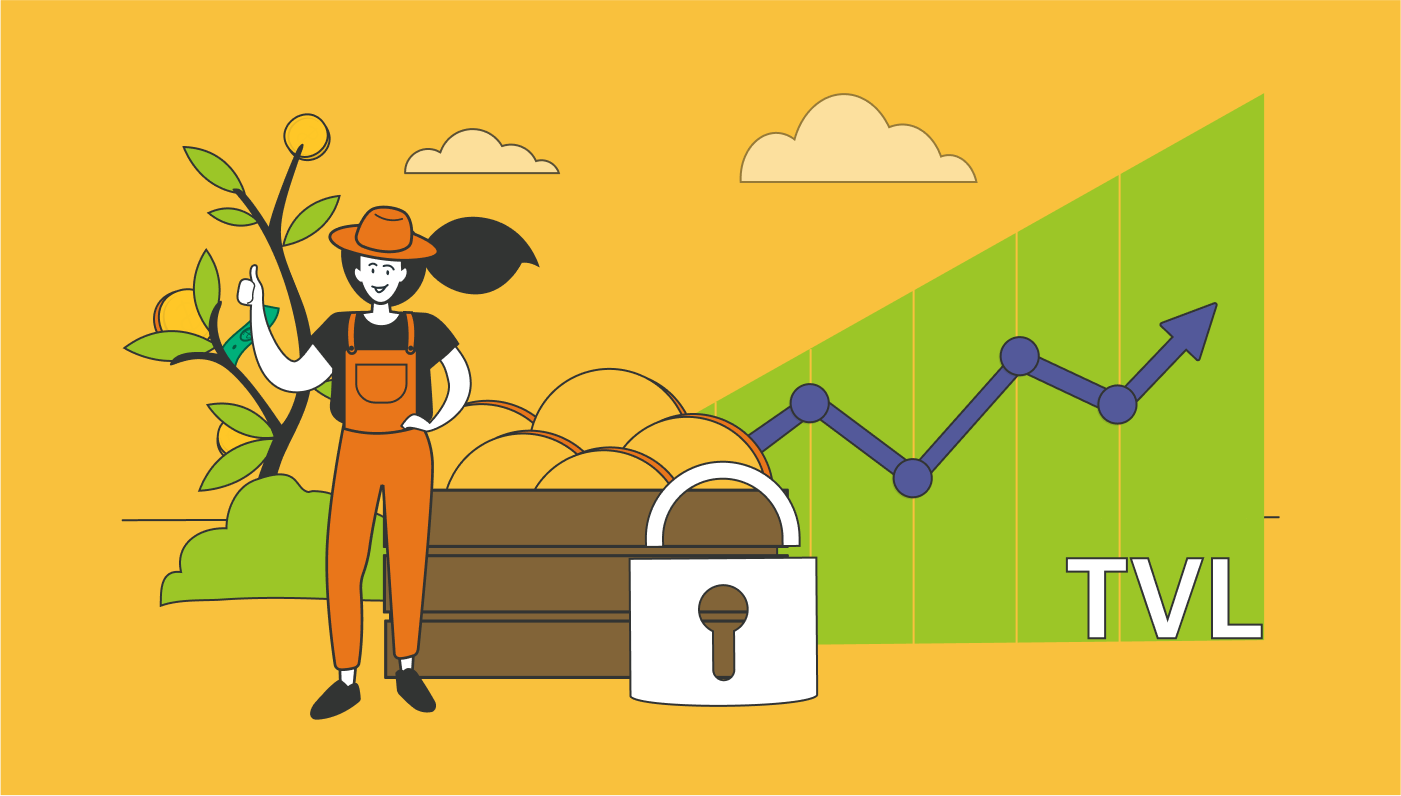
It has become increasingly common for protocols to incur massive expenditure upfront to increase asset allocation, with the aim of recouping their investment over time. Yet, this also involves an element of risk. If only yield farmers are attracted to the protocol due to the incentives, there will not be enough non-farmers to fund the reward, creating short-term highs of mercenary liquidity followed by a collapse over the long term.
Yield Farming Activity 5: Protocol Management and Governance
While code does much of the work on the blockchain, protocols still require upgrades, security issues need addressing and capital needs to be allocated. Many of these tasks are performed in a decentralized fashion by protocol stakeholders through voting, writing, or reviewing code. However, pooled management systems can be used for directing liquidity across liquidity pools and allocating digital assets across various lending and liquidity protocols. They enable yield farmers to create value through more efficient management, reallocating liquidity faster and more cost-effectively to certain markets.
Yield farmers using pooled protocols can save on transaction costs, while also earning greater compensation from borrowers and liquidity utilizers since the pooled management system automatically identifies and directs resources to the highest-value opportunities.
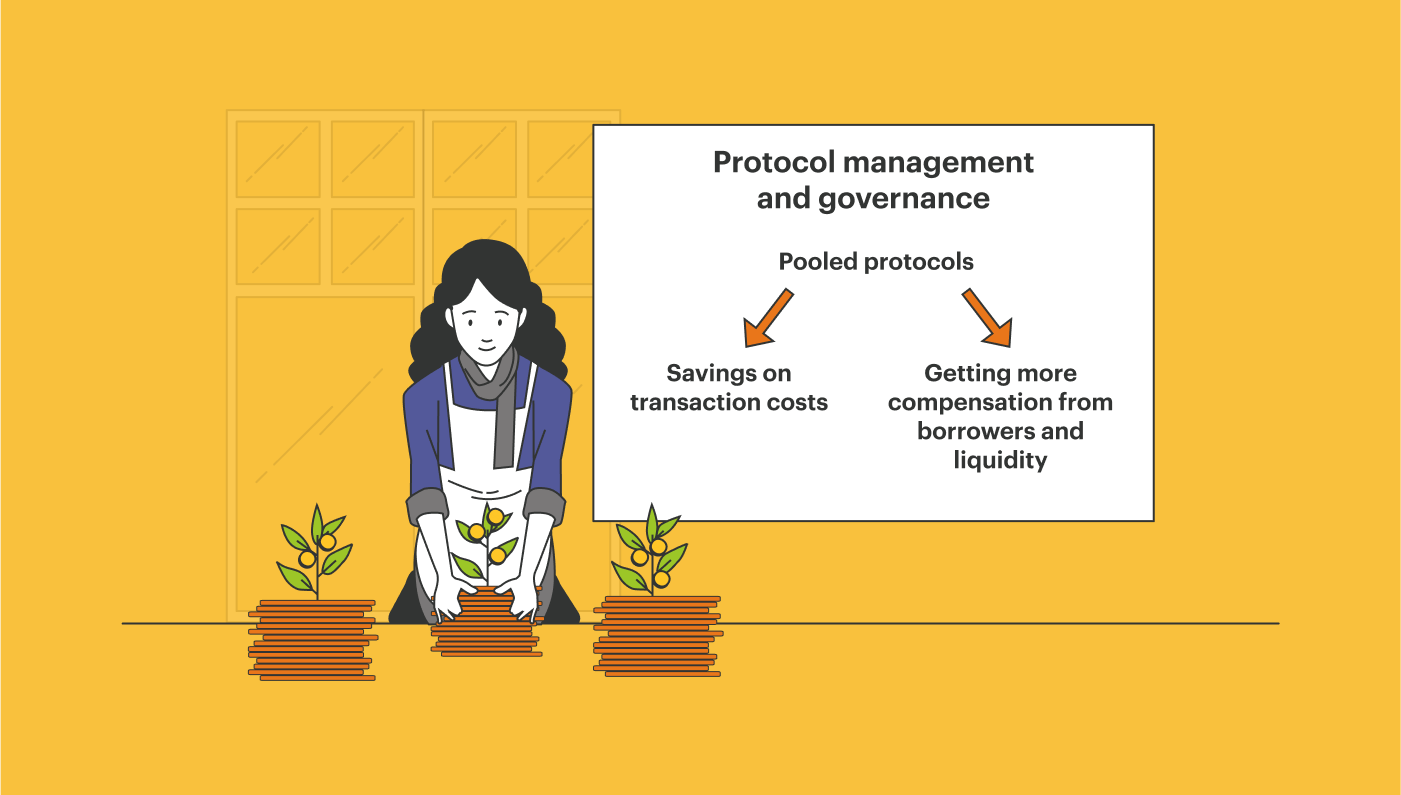
Yield farming is well on its way towards democratizing the financial arena, generating value even for those with small sums to invest, who don’t have a thorough in-depth knowledge of the crypto markets.
Here, at ArbiSmart, we will be introducing our own decentralized protocol in Q4 of this year. The protocol will offer lending and liquidity provision opportunities for unmatched rewards of up to 190,000% APY, plus 0.3% of the fees from each trade. The new service will offer a fresh spin, enabling yield farmers to increase their profits with never-before seen gamification features.
The new DeFi protocol is part of a wider development push that started in the summer with the introduction of the ArbiSmart interest-generating wallet and will continue all the way through to the end of the year with the launch of a mobile app, an NFT marketplace, a collection of unique ArbiSmart digital artworks, a cryptocurrency exchange and a gaming metaverse.
All these interconnected additions to the ArbiSmart ecosystem will require use of our native token, RBIS, driving demand and straining the supply, leading to a rise in token price. So, in addition to profits from yield farming, trading, savings plans, NFT’s gaming and crypto arbitrage, RBIS owners will also earn great capital gains. In fact, analysts are projecting a rise to more than 35 times its current value by the end of 2022.
Take a closer look at ArbiSmart (RBIS) or learn more about yield farming and a wide range of other crypto strategies and investment opportunities, by checking out the ArbiSmart blog.
